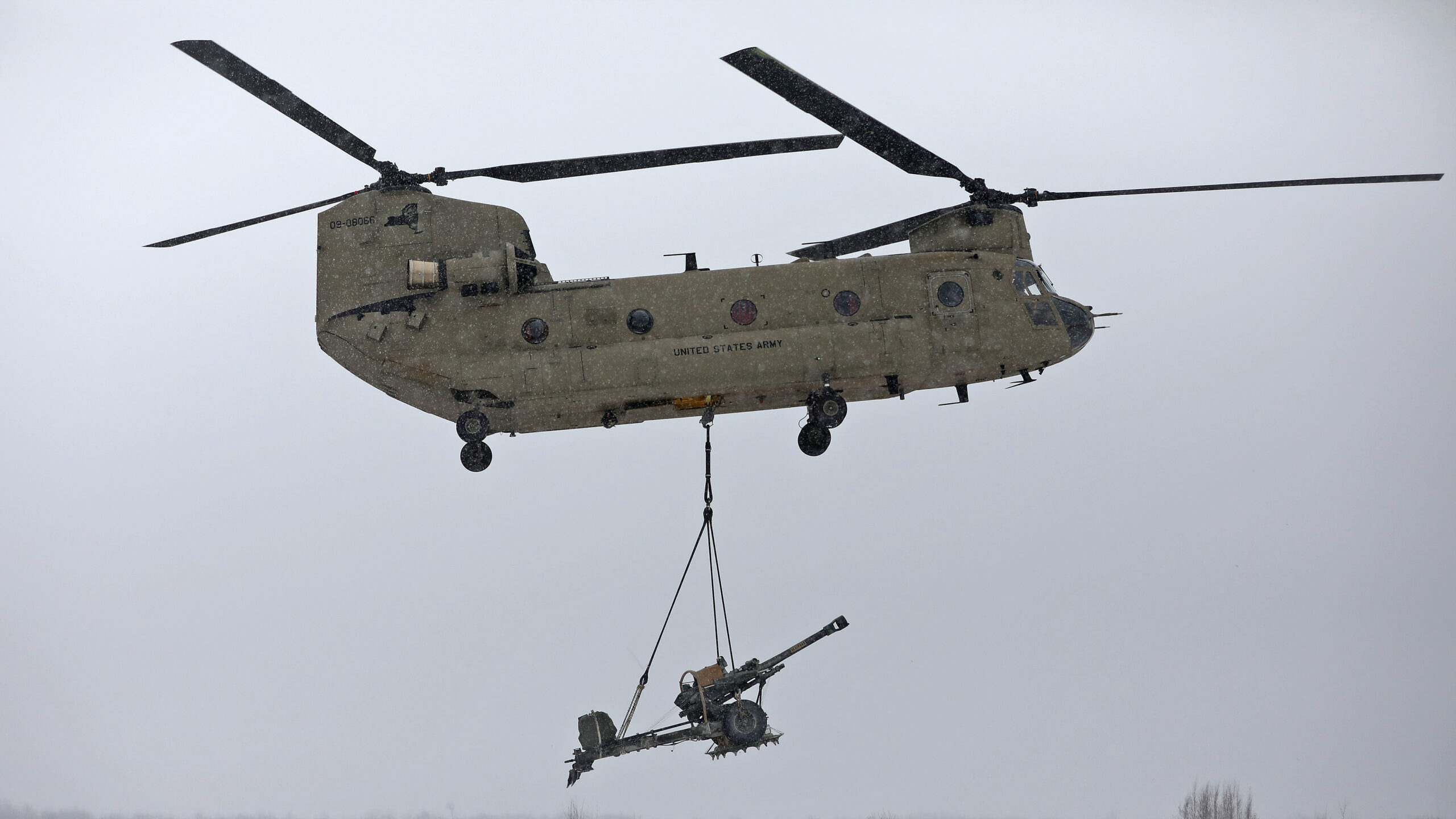
A CH-47 Chinook helicopter takes off carrying an M119A3 howitzer after Soldiers assigned to 10th Mountain Division executed an air assault sling load operation during battery level gunnery certification in 2019 at Fort Drum, New York. (U.S. Army photo by Staff Sgt. Paige Behringer)
WASHINGTON — The US Army’s Chinook fleet is almost totally fixed, according to the Army’s director of aviation, months after the service was forced to ground the heavy lift helos due to concern over engine fires.
“As of today, we’re above 90 percent of all Chinooks being fixed,” Maj. Gen. Hank Taylor, the director of Army aviation told reporters during the annual Association of the United States Army conference. For the remaining 10 percent, “we’re waiting for normal maintenance to happen and then I’d say, you know, by the year we’ll be good.”
At the end of August, the Army grounded its Chinook fleet when a faulty part, called an O-ring, led to fuel leaks and a “small number” of engine fires. At the time, a statement from Chinook engine-maker Honeywell said that the service had identified faulty O-rings installed during routine maintenance at an Army depot and was working to replace them on the affected Chinooks.
FULL COVERAGE: Check out Breaking Defense’s coverage of AUSA 2022
The Honeywell statement said that “none of the questionable O-rings originated or were part of any Honeywell production or Honeywell-overhauled engines.”
“In full coordination with the U.S. Army, Honeywell helped discover that O-rings not meeting Honeywell design specifications had been installed in some T55 engines during routine and scheduled maintenance at an Army Depot,” the statement said.
In early September, the Army provided information that indicated that a cataloging issue led mechanics at the depot to install the wrong O-ring on the birds, according to a Sept. 6 report by Inside Defense. The service said that it had corrected the cataloging issue.
During the roundtable with reporters today, Maj. Gen. Tom O’Connor, aviation and missile command commanding general, said that when the issue occurred, the Army had to run data analytics to determine the root cause of the problem, and has now solved the issue. The two-star also deflected blame away from the depot.
“Most of the engine maintenance is done at the depot, but it’s not because of anything that the depot wrong,” O’Connor said.
The event raised major readiness concerns at a time because the Chinook issues came just weeks after the Pentagon was forced to ground several aircraft due to unrelated safety issues. For the Chinook incident, Taylor said the service was able to “mitigate” impacts with other aircraft.
“Operationally, obviously we had an immediate impact when the grounding [happened] which we mitigated you know, almost overnight with other airframes, [with] Black Hawks and other capabilities,” he said.























